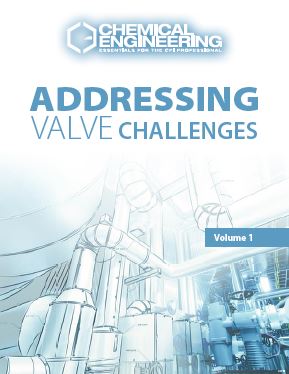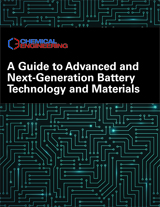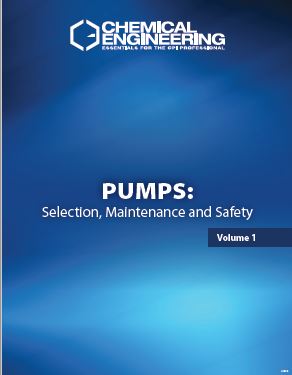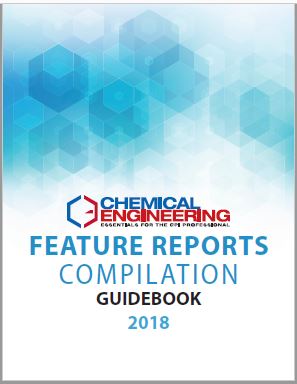Description
Valves are an essential part of all chemical process industries (CPI) operations. The articles in this Chemical Engineering Guidebook provide practical guidance related to the proper selection, specification and sizing of several types of valves to enable proper fluid control while ensuring overall reliability and safety.
Several engineering topics focus on the proper selection and operation of control valves, pressure-relief valves, while others focus valve positioners and sensors. Others focus on proper design and operation of pressure-relief systems.
This guidebook provides tips for the proper selection and sizing of rupture disks, as well as tips for using them in conjunction with pressure-relief valves. As a bonus, several articles also include engineering recommendations related to control diagnostics, troubleshooting in the field, planning for plant revamps, improving operability, and managing challenges associated with hygienic operation.
These practical, how-to articles were originally published in Chemical Engineering between 2012 and 2019.
Delivered in a PDF format, 134 pages.
Articles Include:
Protecting Instruments from Overpressure
• Overpressure in a process can damage the seals in a pressure instrument’s sensor or skew the zero point. Here’s how to avoid the problem
Prevent Product Release with Pressure Protection Systems
• Closing off pressure upstream can minimize the need for pressurerelief systems to open, avoiding product waste and possible environmental damage
Liquid Flashing in a Control Valve Without Choked Flow
Engineering for Plant Safety
• Early process-hazards analyses can lead to potential cost savings in project and plant operations
Key Considerations in Specifying Control Valves
• Follow this guidance to specify a control valve accurately during the design phase
Control Valve Performance
Using Rupture Disks with Pressure Relief Valves
Advances in Valve Position Monitoring
• New control-valve technologies improve performance and lower costs
Pitfalls to Avoid When Generating Cost Estimates
• The pitfalls in cost estimating that cause project overruns have been well known for decades, yet they continue to plague the CPI
Cost Engineering: Equipment Purchase Costs
• A methodolody and examples for estimating equipment costs are presented
Control Valve Selection: True Cost Savings Are Available
• Control valves must respond quickly and accurately in a variety of process conditions. Selecting the proper equipment enhances process economics, safety and efficiency
Valve-Selection Best Practices
• Precise combinations of valves and other equipment lead to process success. A biopolymer fermentation process provides an example of proper valve selection
Rupture Discs: Effectively Minimize Leaks and Emissions
• When installing rupture discs, there are several mechanical and operational considerations for reducing the likelihood of leaks and fugitive emissions
Vapor Depressurization: Concept and Implementation
• When carrying out depressurization calculations, special attention is needed for critical equipment and systems such as rotating equipment, columns and reactors
Combining the use of Rupture Discs with Relief Valves
• Using the two devices together offers significant benefits in chemical processes. Here is how to take advantage of them
Modern Rupture Discs Support Increased Plant Capacity
• The use of today’s high-performance rupture disc designs can help to reduce many common operating problems and support increased throughput requirements
Field Troubleshooting 101 and How to Get the Job Done
• A major part of field work lies in troubleshooting problems: finding out why a system is not operating the way it is intended. This article provides guidelines for effective troubleshooting and contains many
practical examples of their successful use
Pressure-Relief System Design: Developments and Deficiencies
• Areas of recent activity for pressure-relief systems include new calculation methods and updates to existing codes and standards. Included here is an overview of recent developments and a look at the results from a recent study of pressure-relief system deficiencies and solutions
Sizing Pressure-Relief Valves for Two-Phases
• Several methods are available for sizing two-phase pressure-relief valves (PRVs). Here, the API 520 homogeneous direct integration method is compared to a potentially simpler alternative that does not require integration
Proper Use of Conventional PRV Discharge Coefficients
• In order to correctly size pressure relief valves (PRVs), a robust understanding of discharge coefficients for vapor, liquid and two-phase flow is crucial
Low-Temperature Handling Considerations
Control Valve Diagnostics
• The proof is in the process, as exemplified in this former HART Plant of the Year winner. This process economic evaluation helps frame the business case
Piping Design for Potentially Lethal Chemicals
• Integrity and reliability are critical for piping and equipment that handle chemicals with extreme health hazards
Best Practices in Capital Equipment Commissioning
• Ensuring that real-world commissioning tests are properly executed can benefit both equipment end users and suppliers
How to Troubleshoot and Maintain Pressure Regulators
• Following a five-step process enables better outcomes for fluid system control
Improving the Operability of Process Plants
• Turndown and rangeability have a big impact on the flexibility and efficiency of chemical process operations
Protecting Sensor Data Transmitted Wirelessly: A Grounds-Up Approach
• Do not assume security is extensive enough to protect your critical data and processes. Take a layered security approach using different




